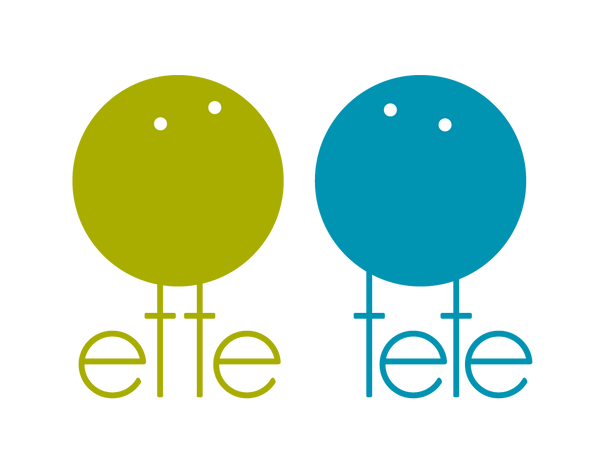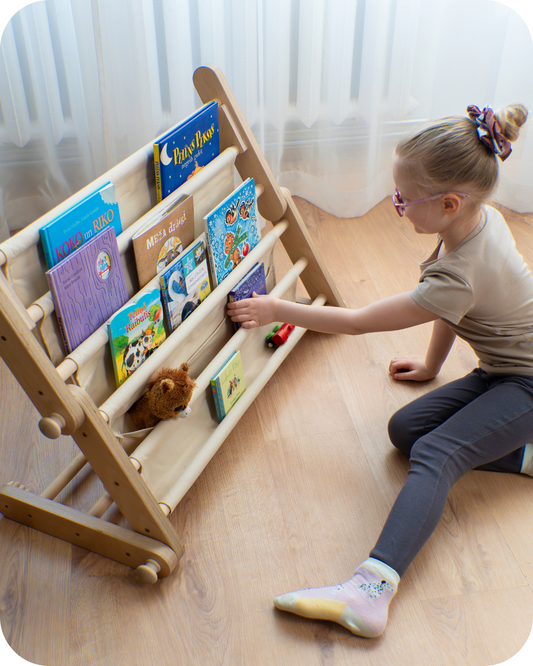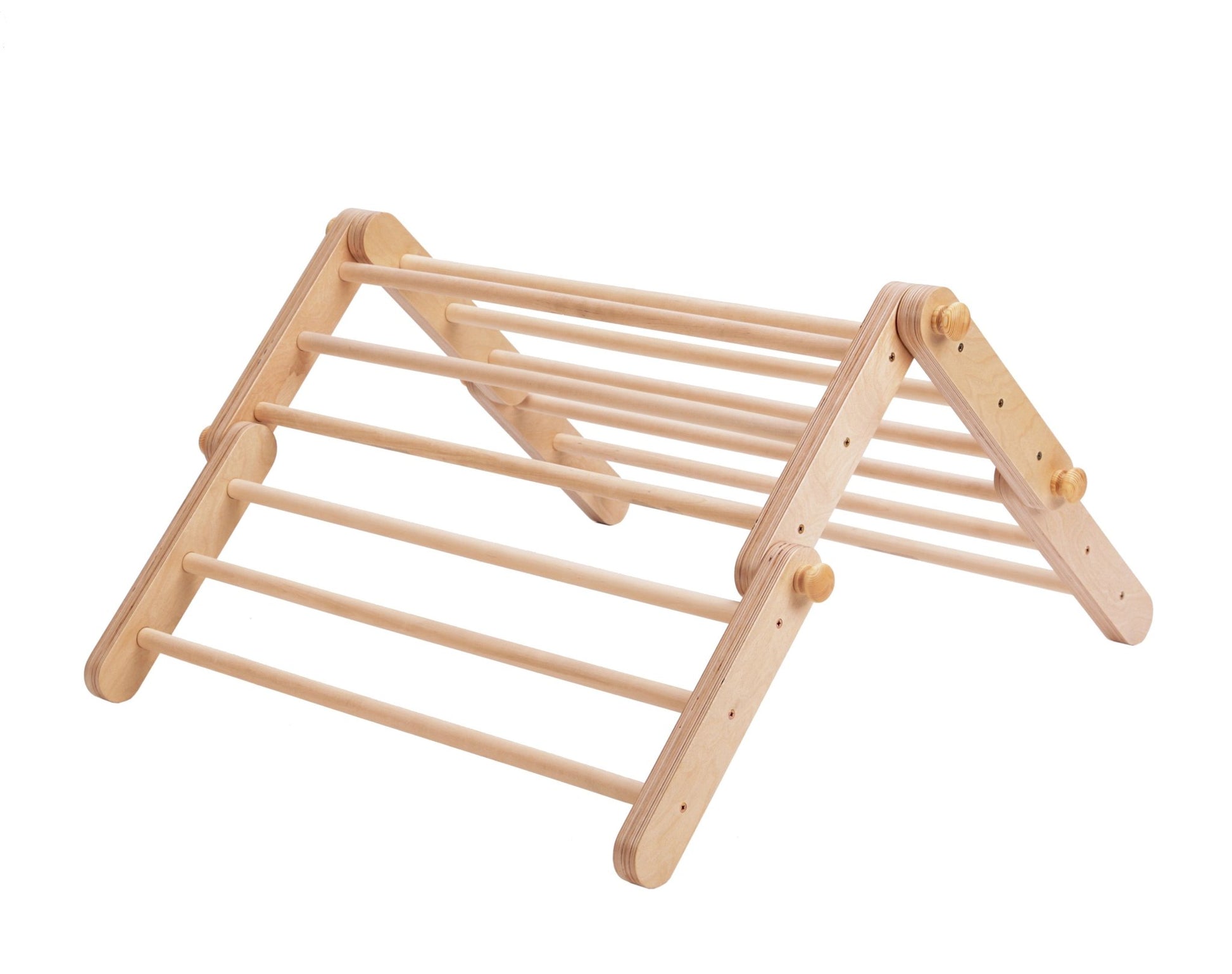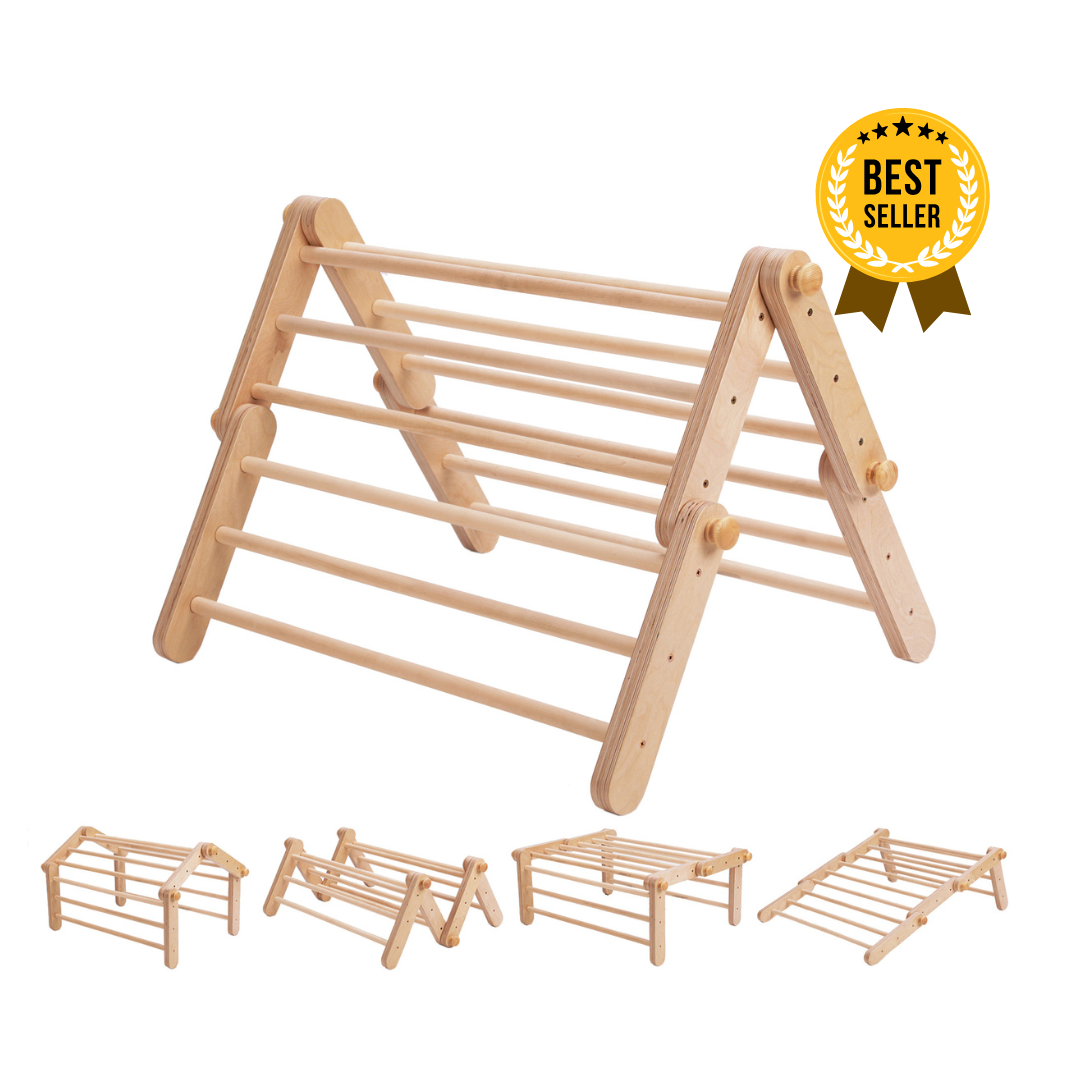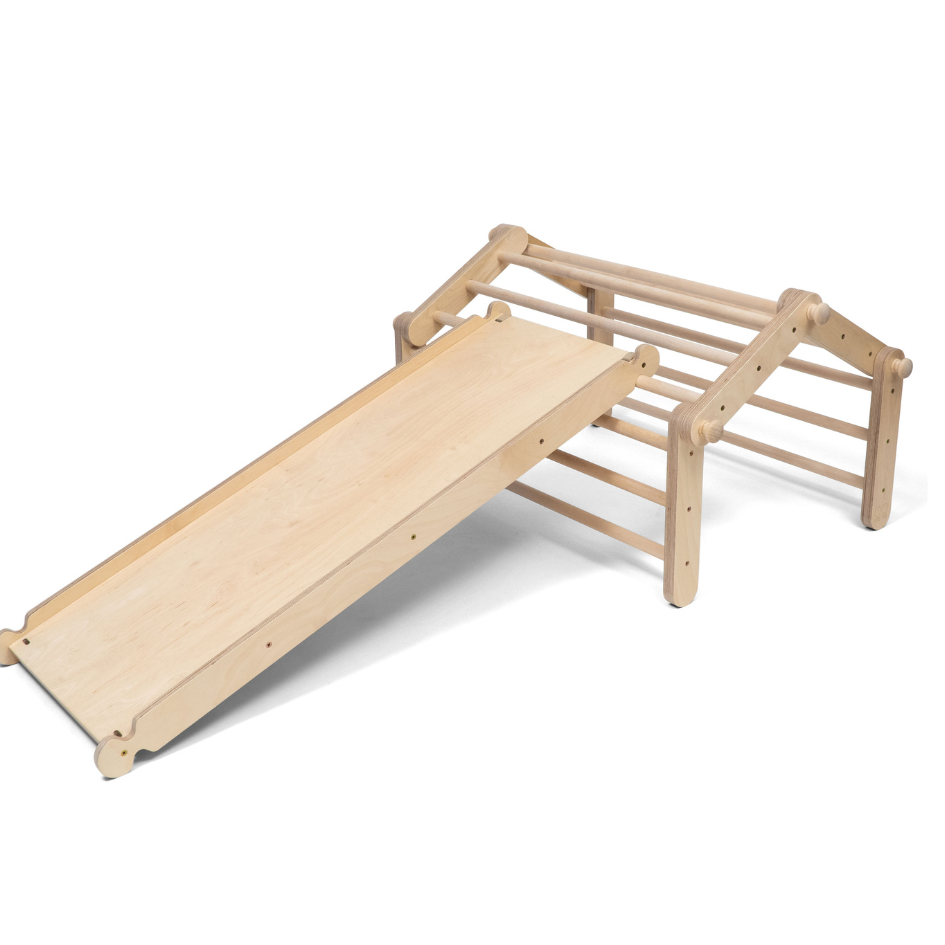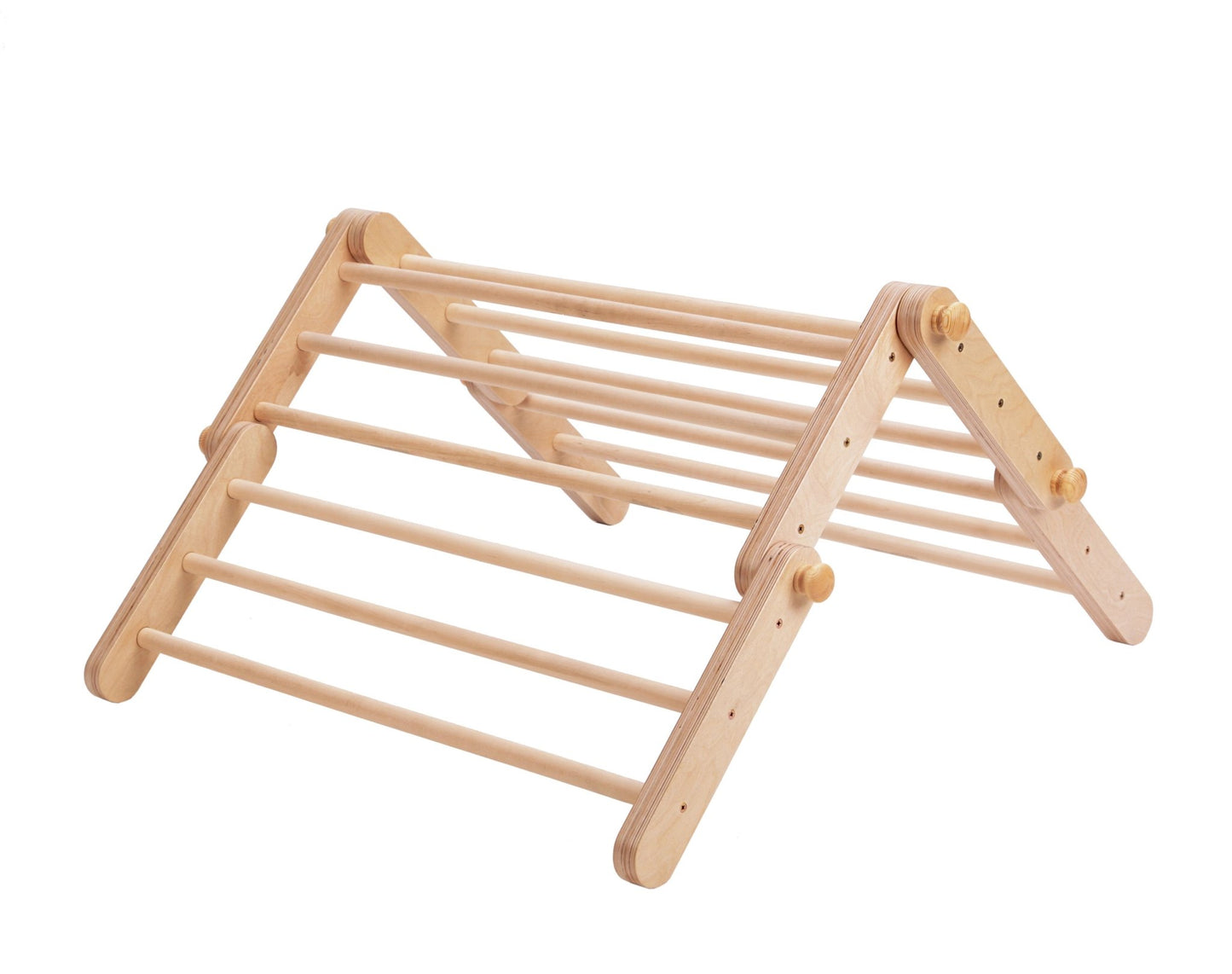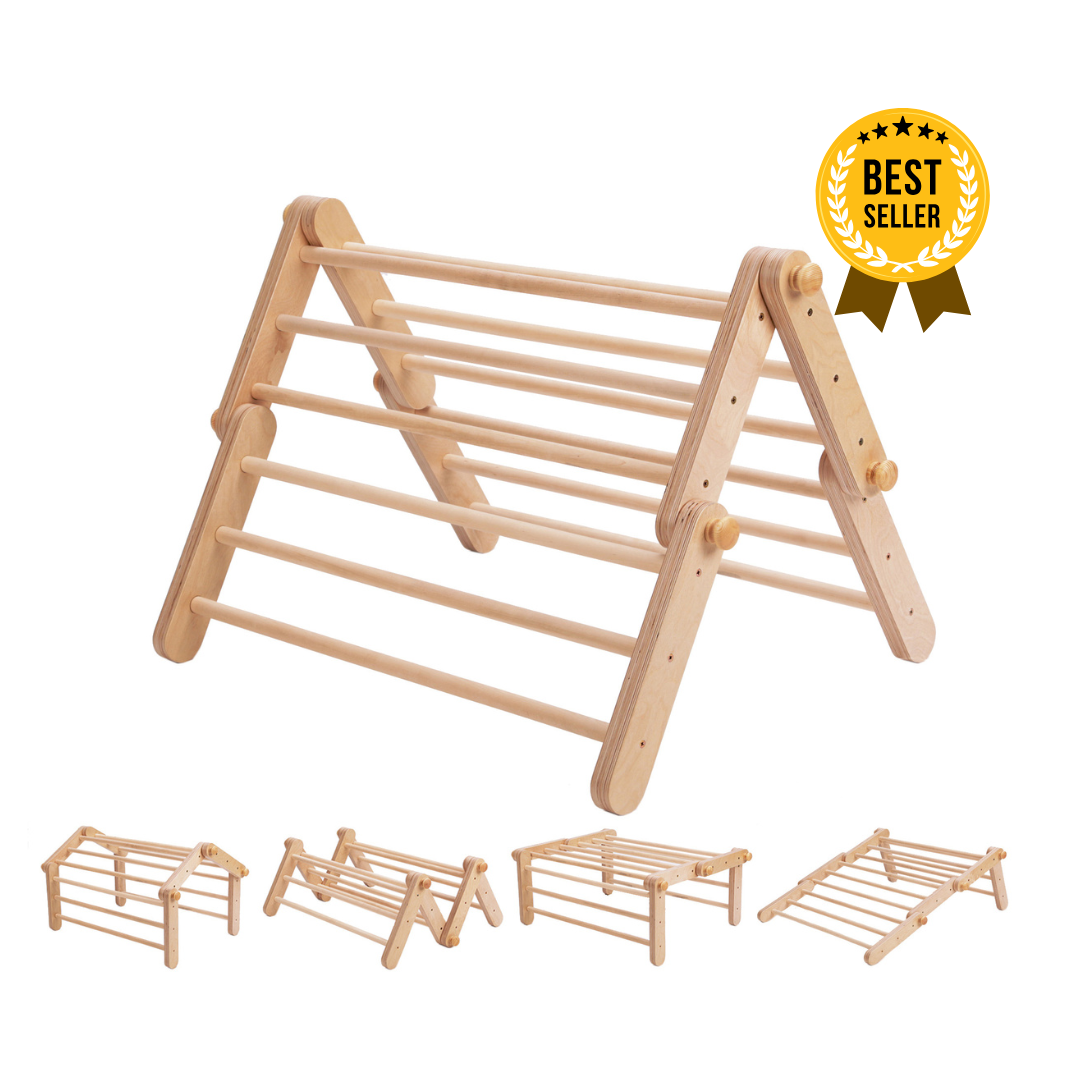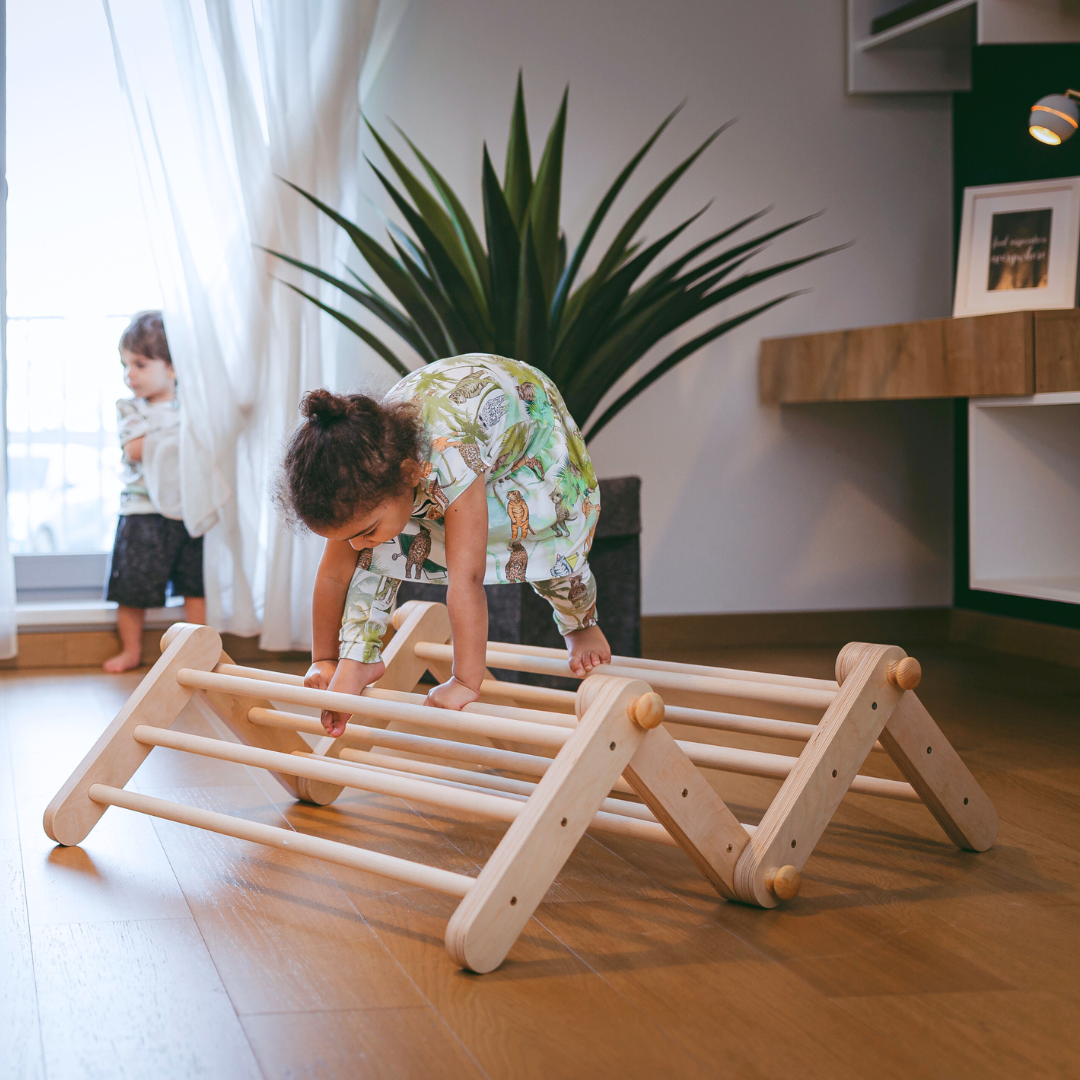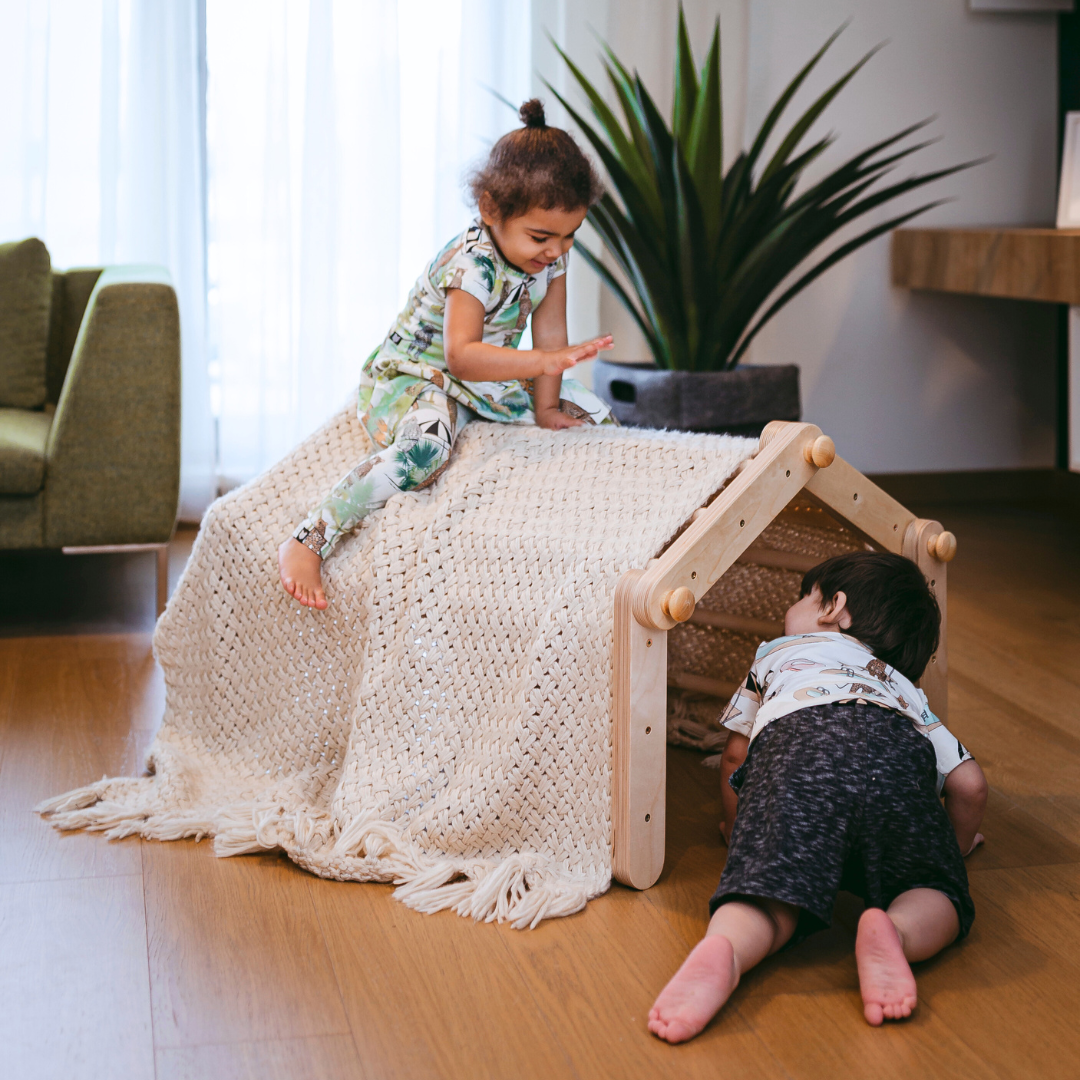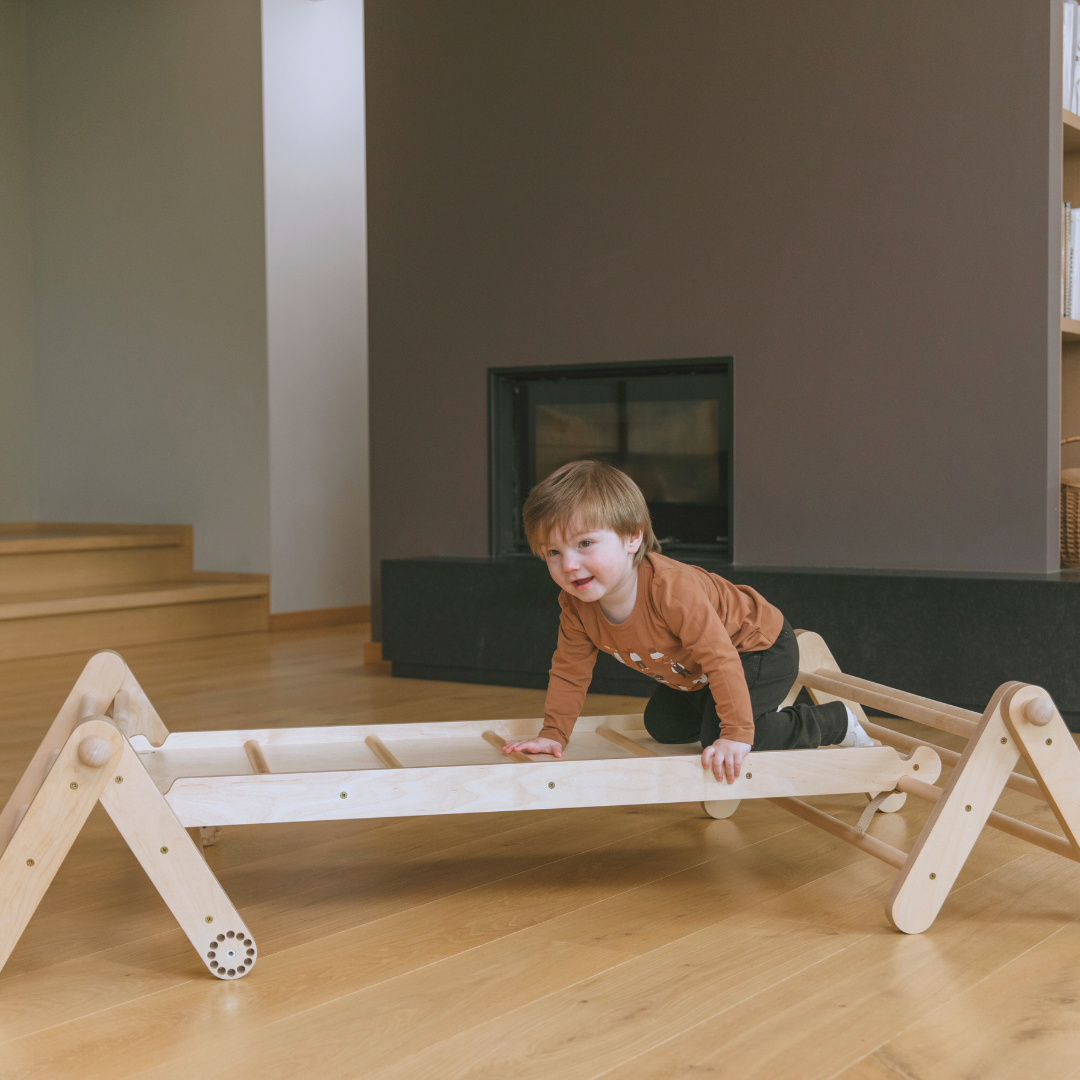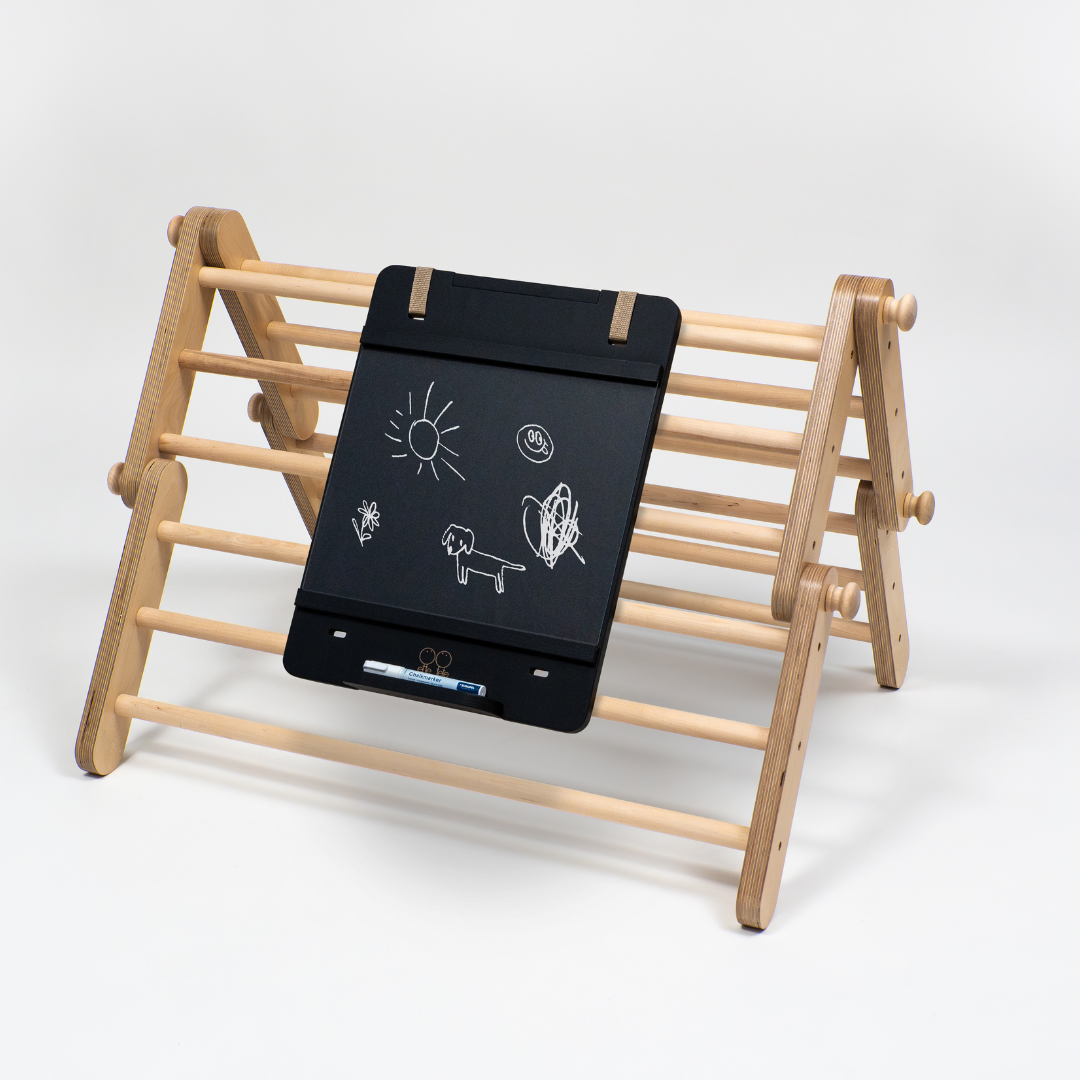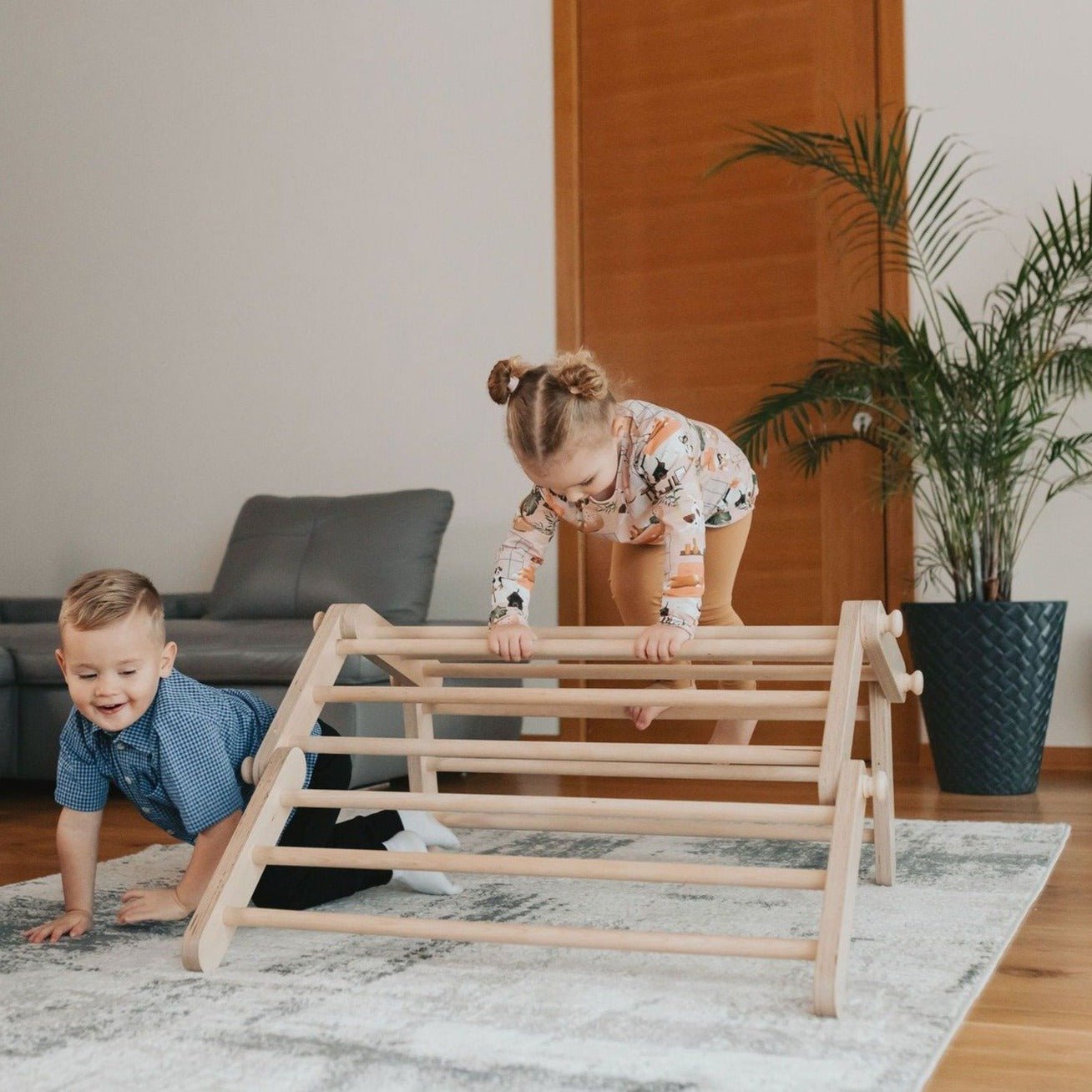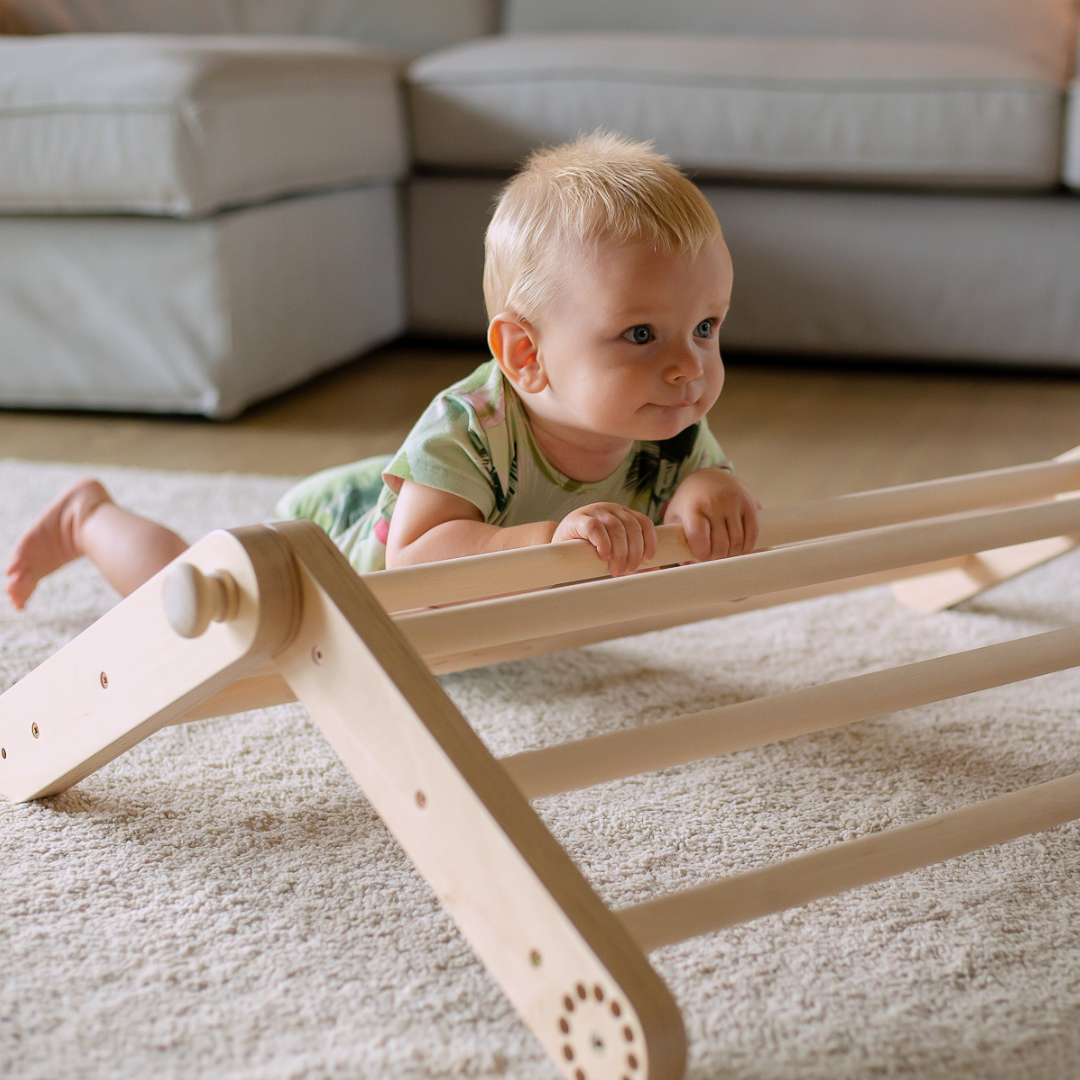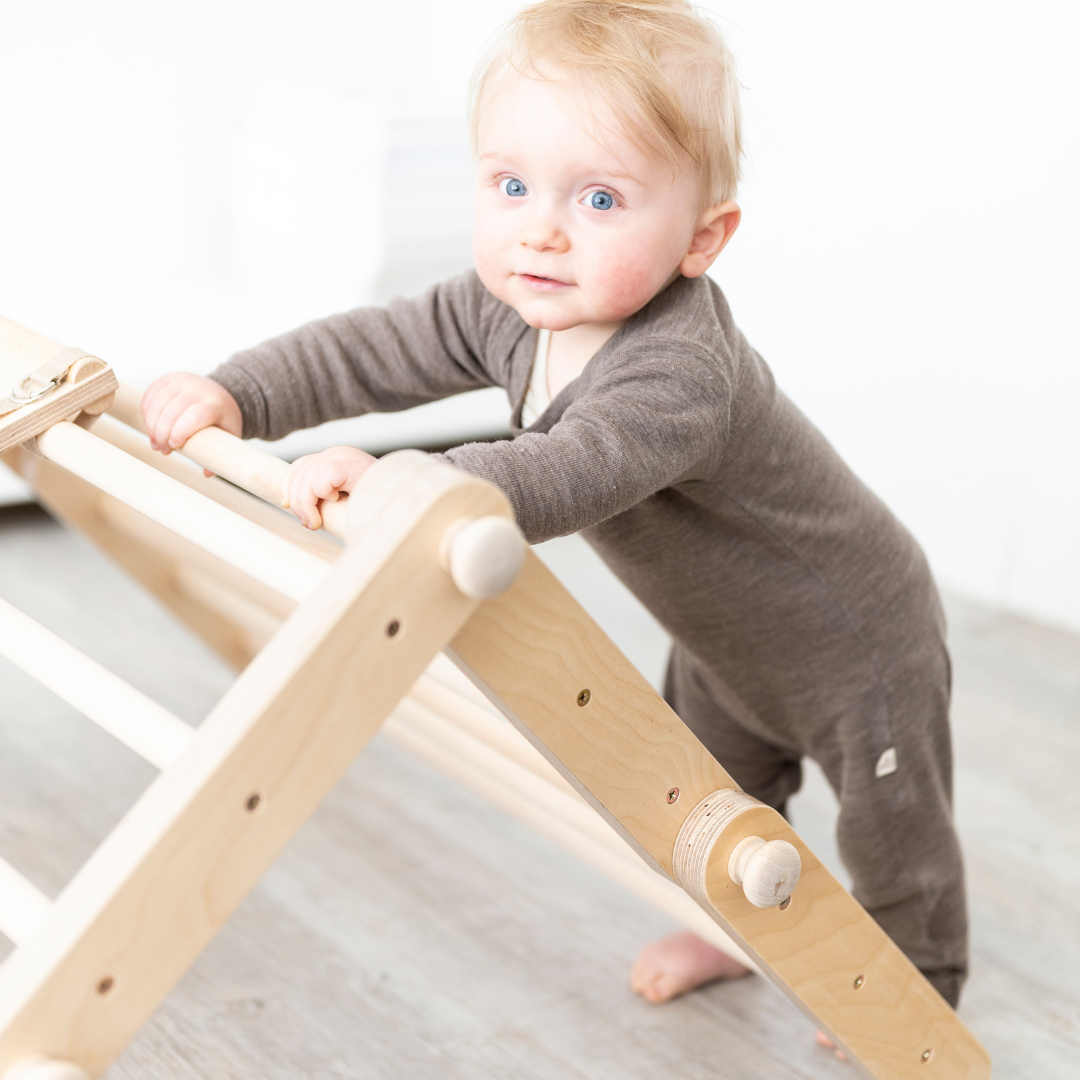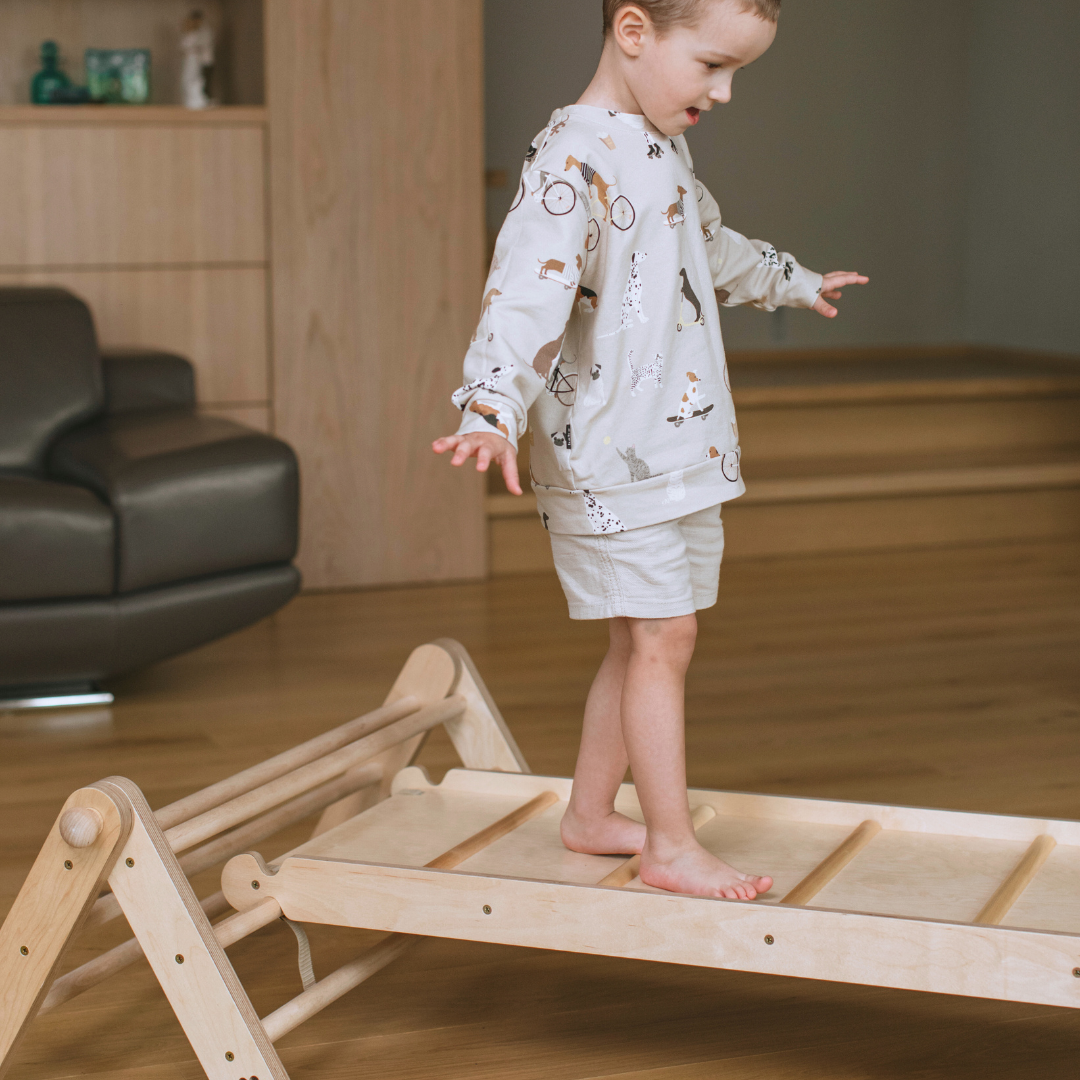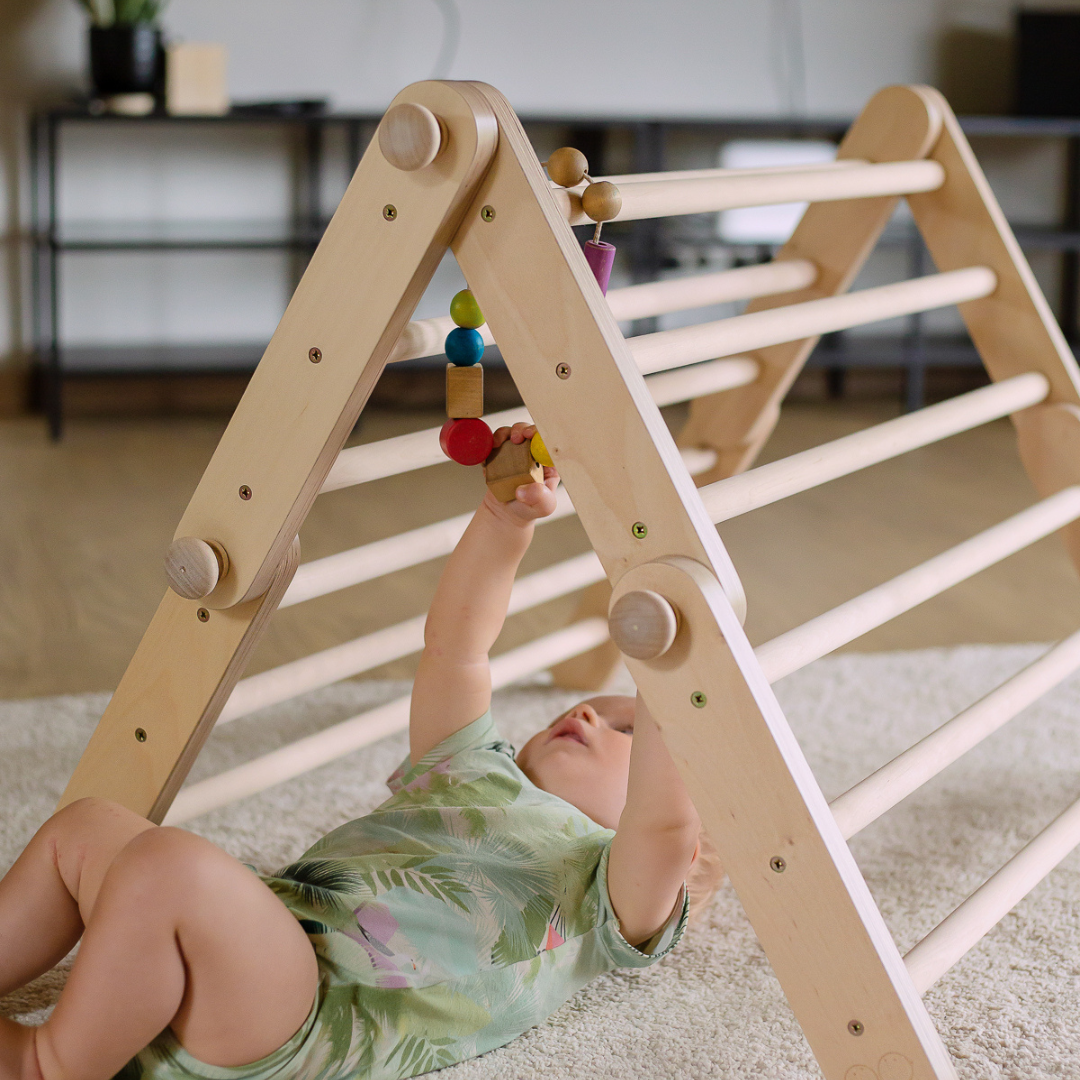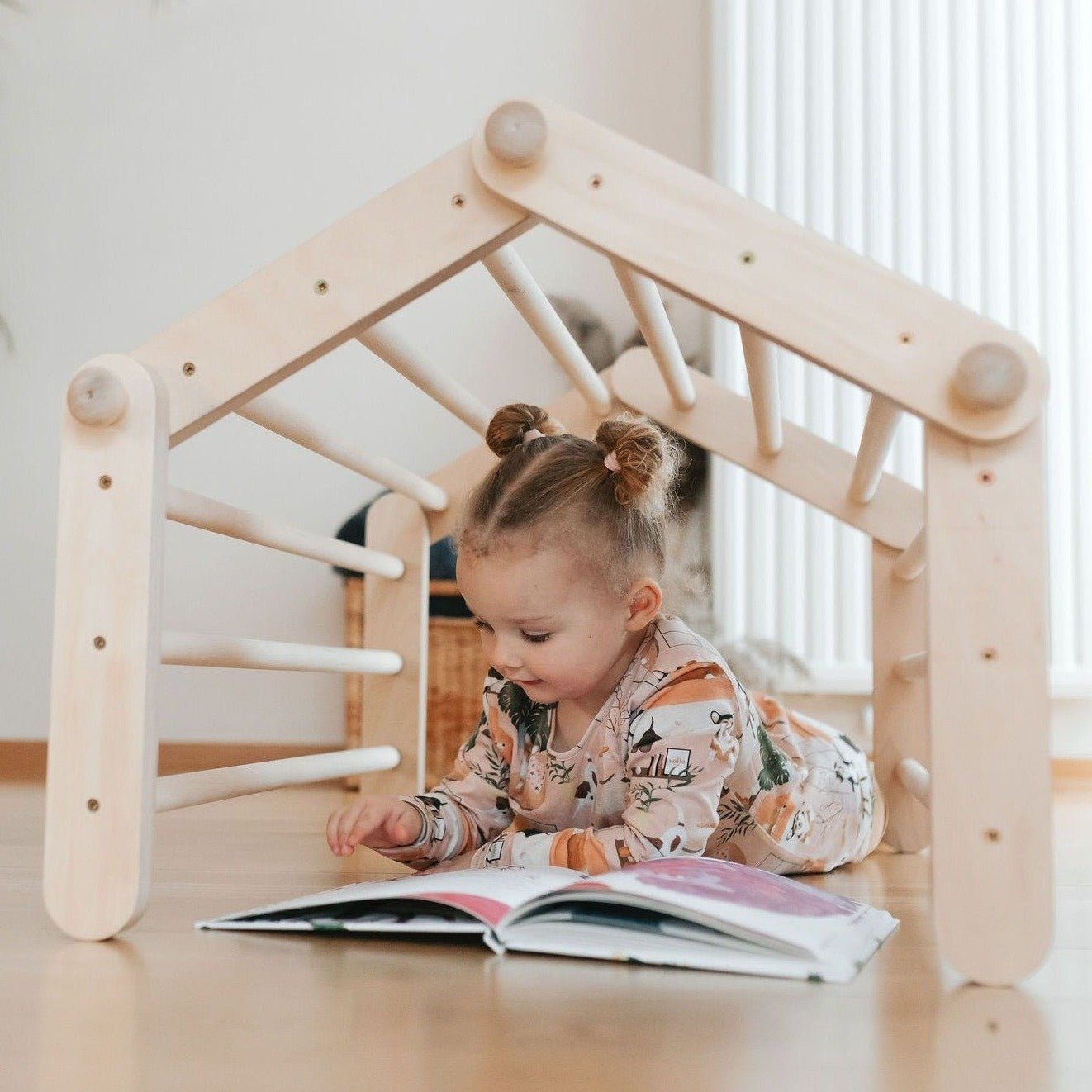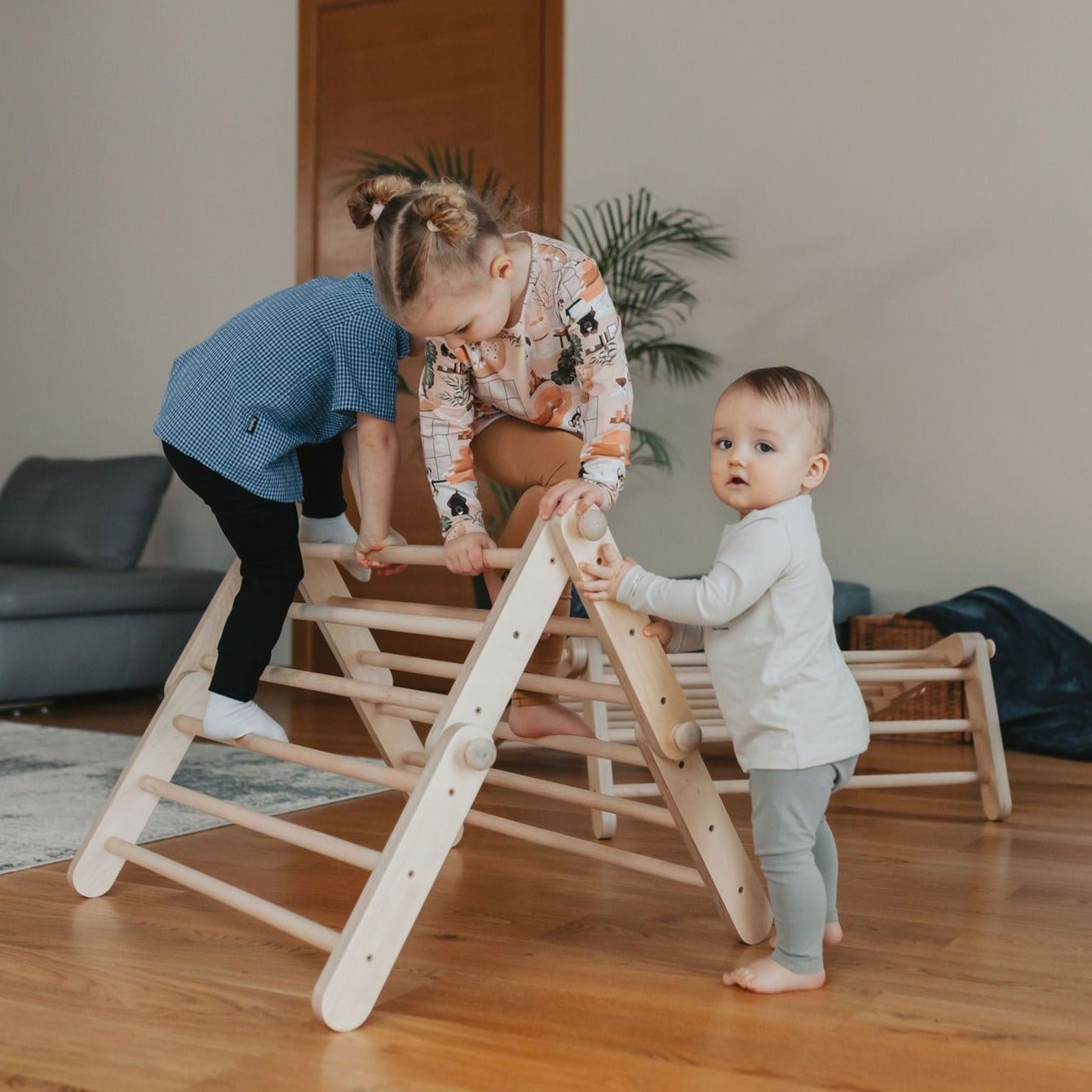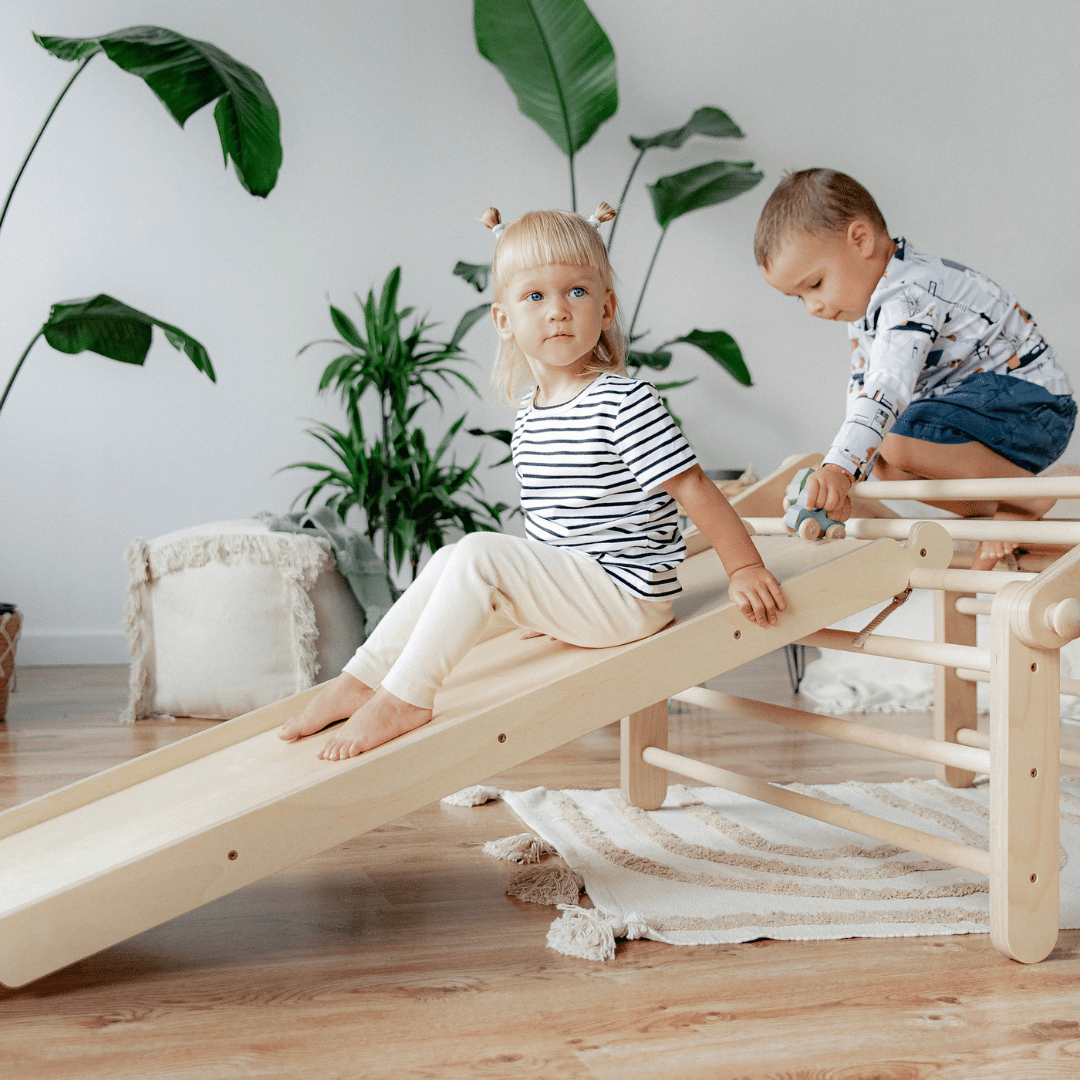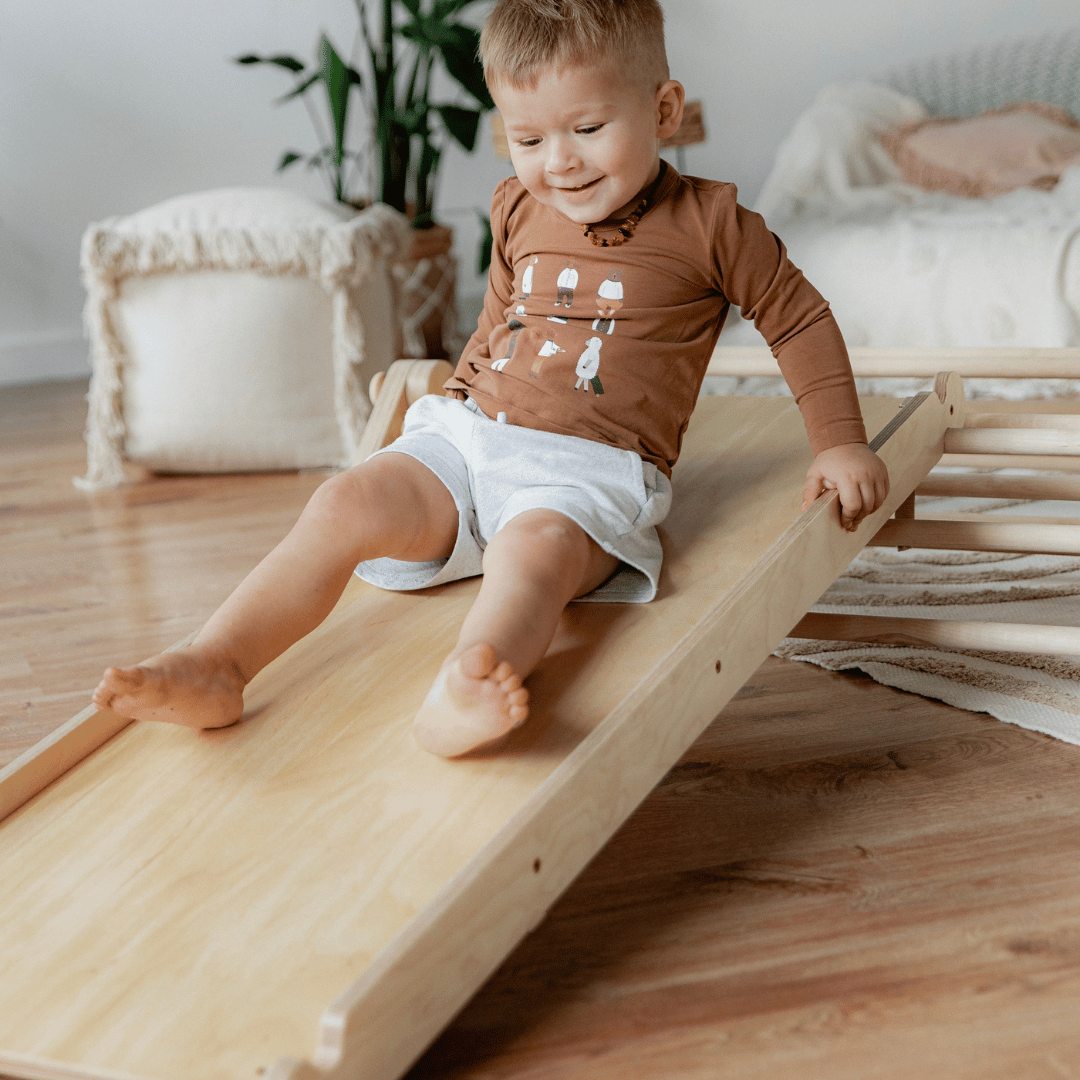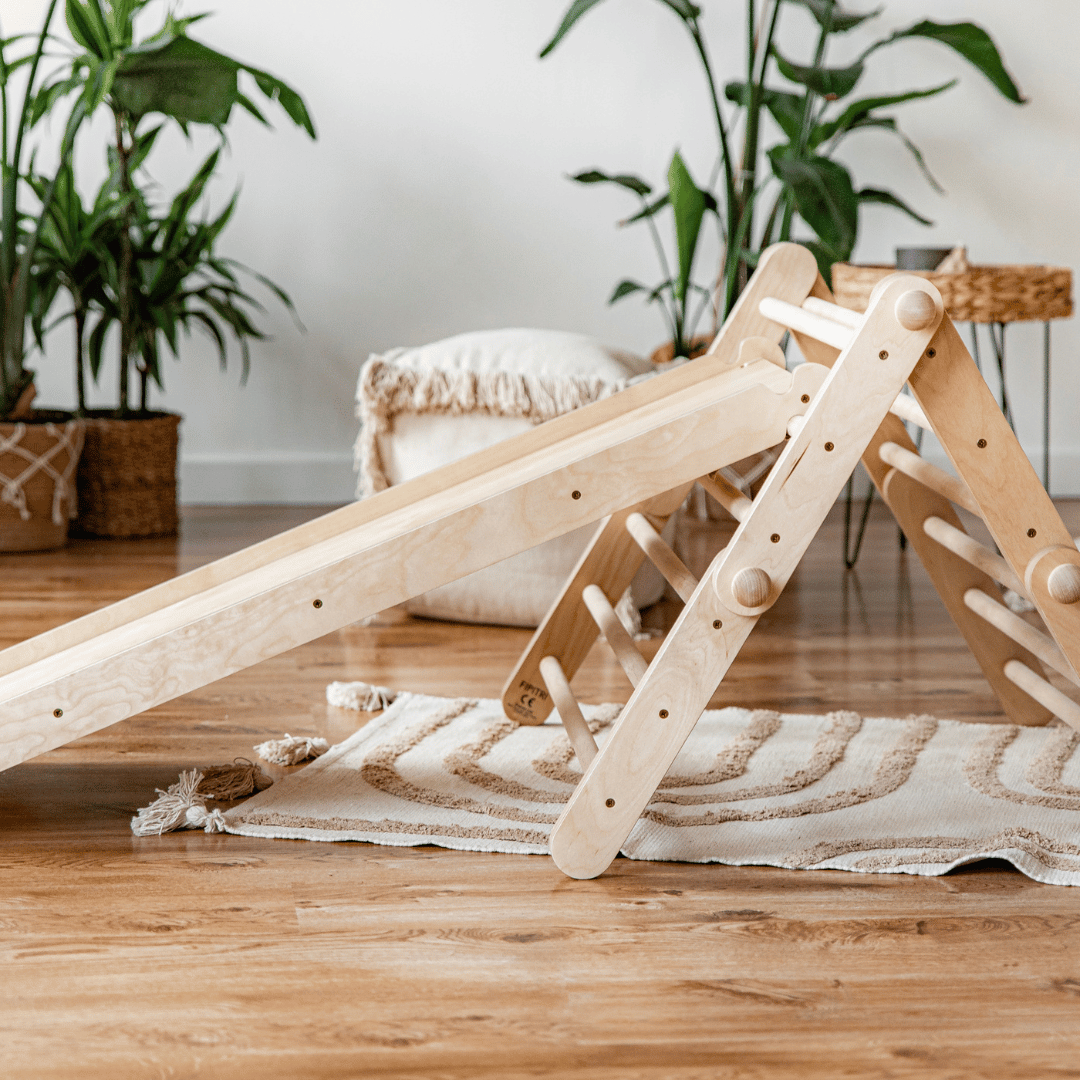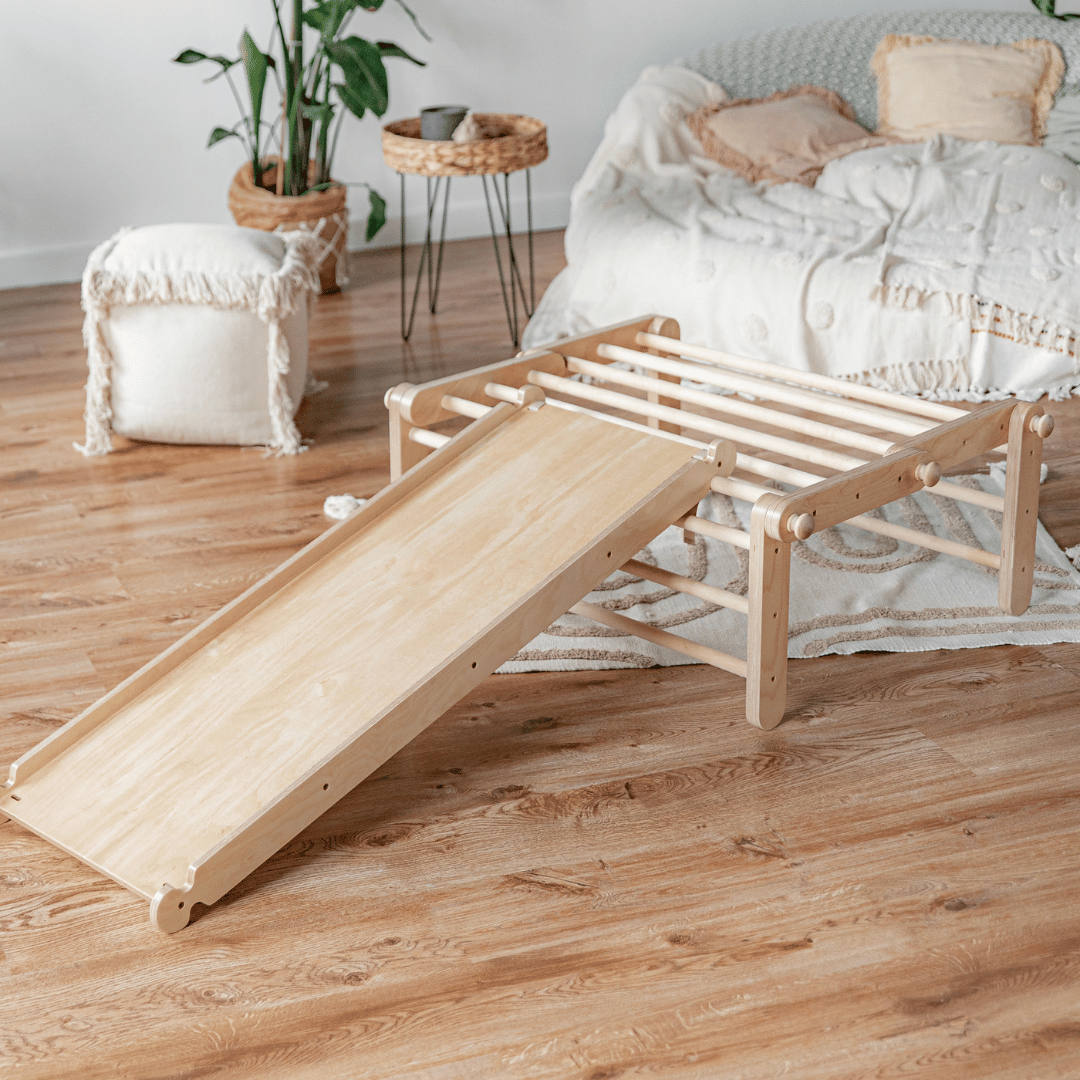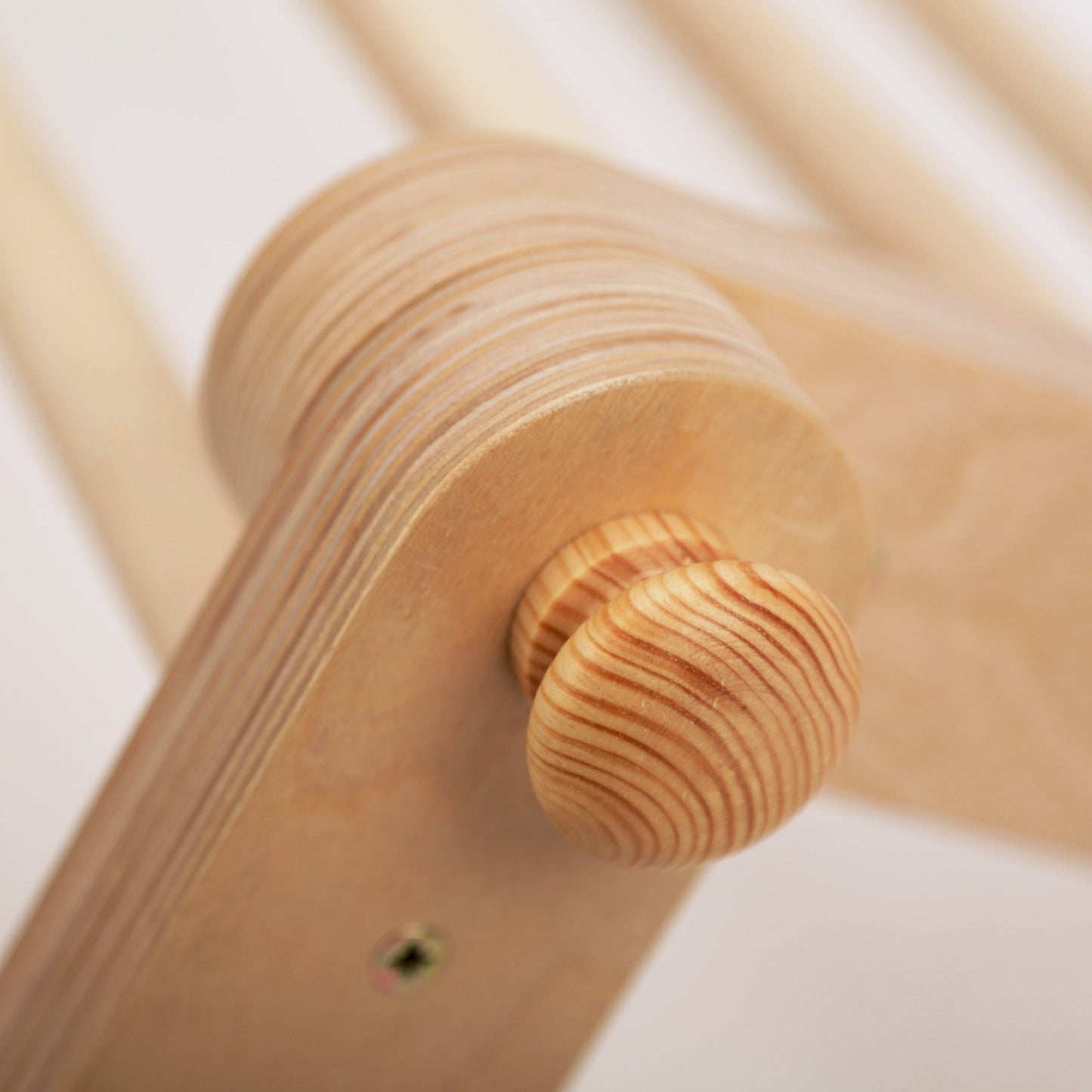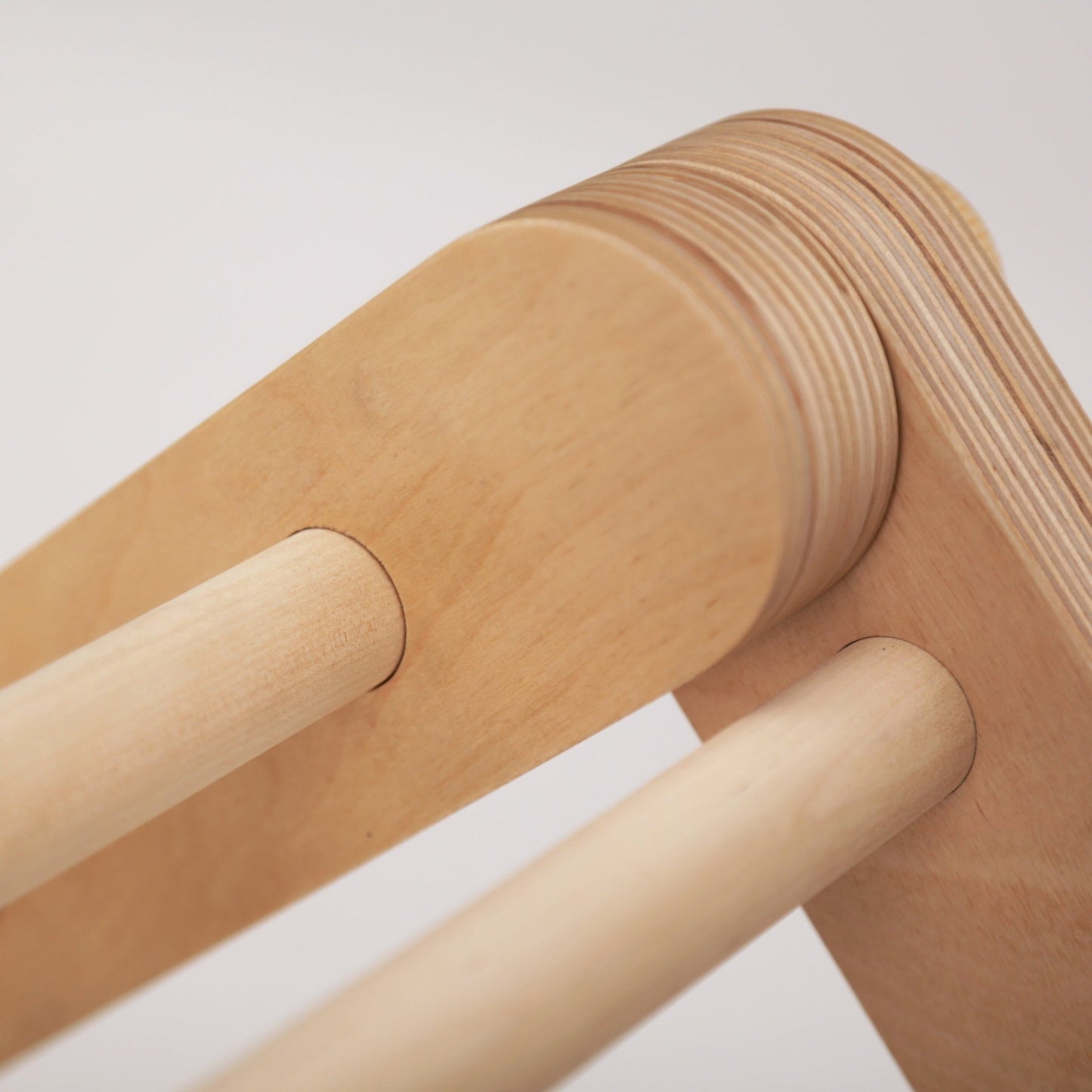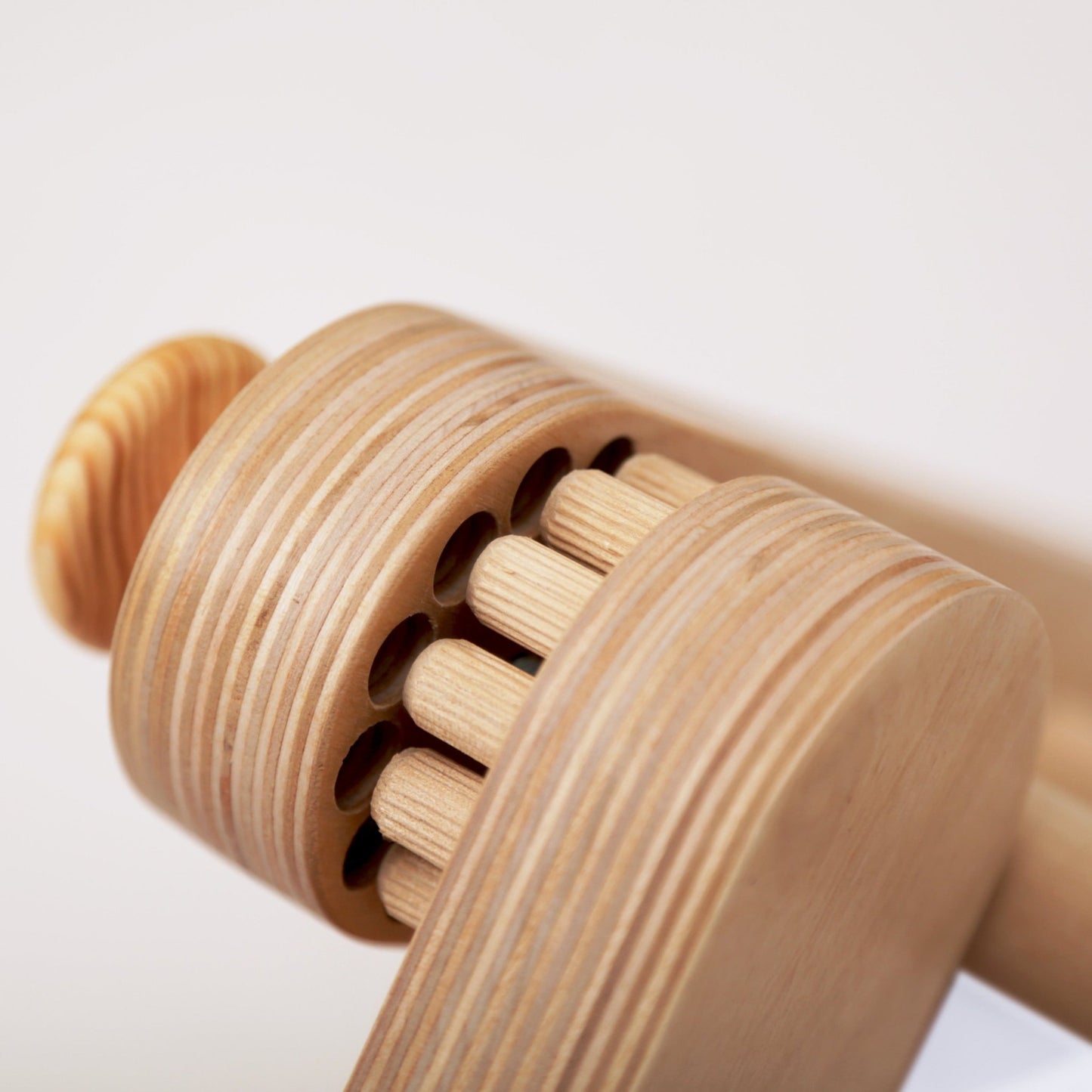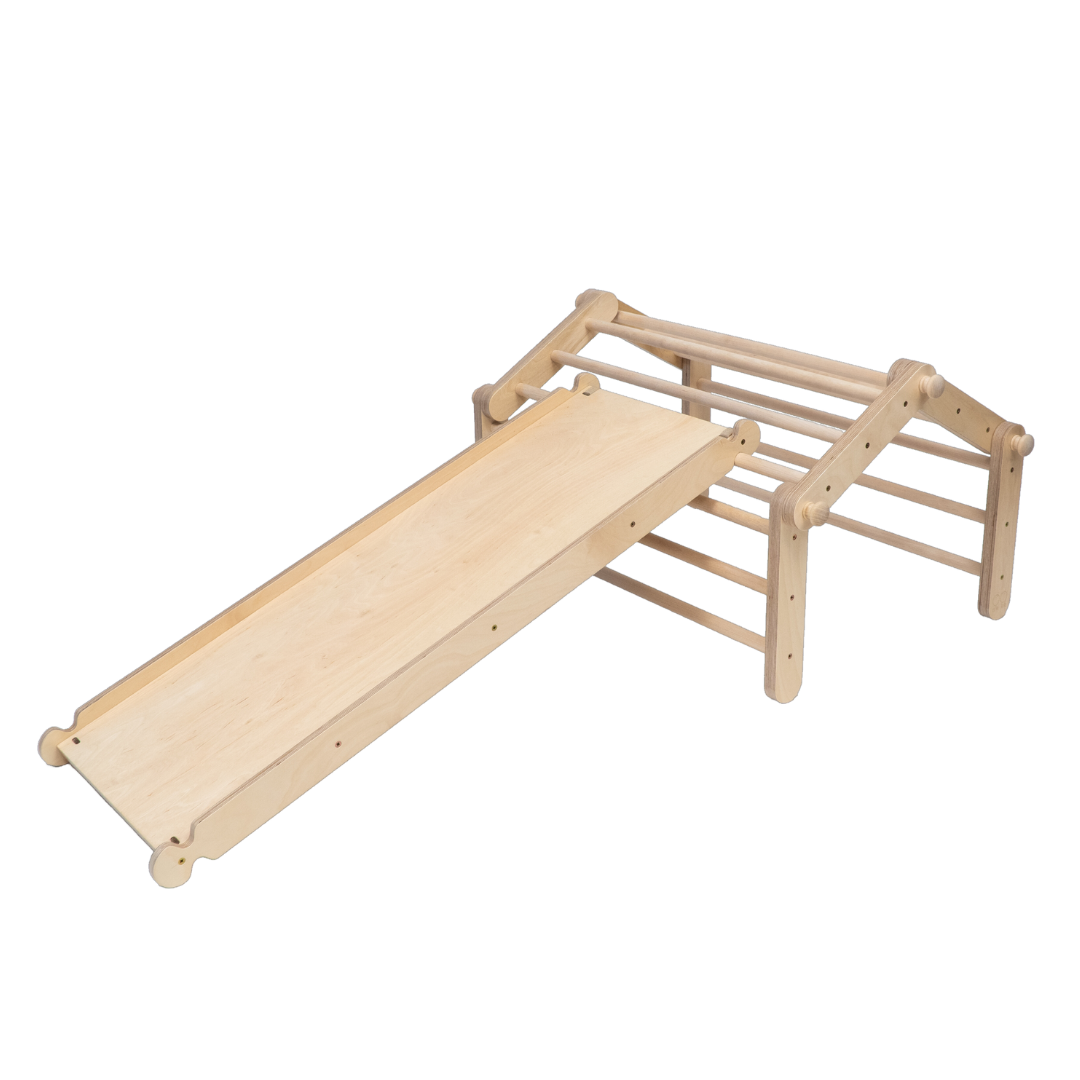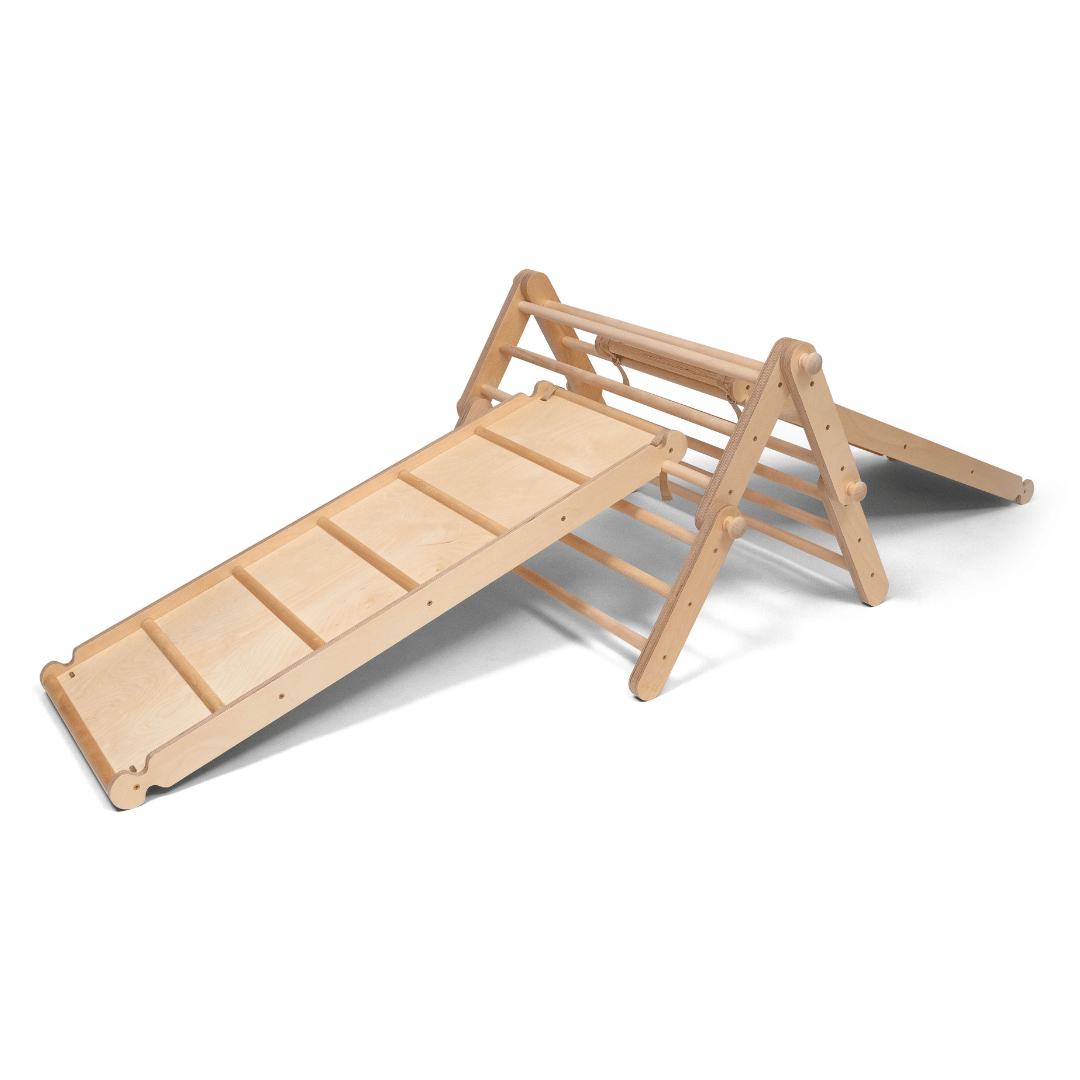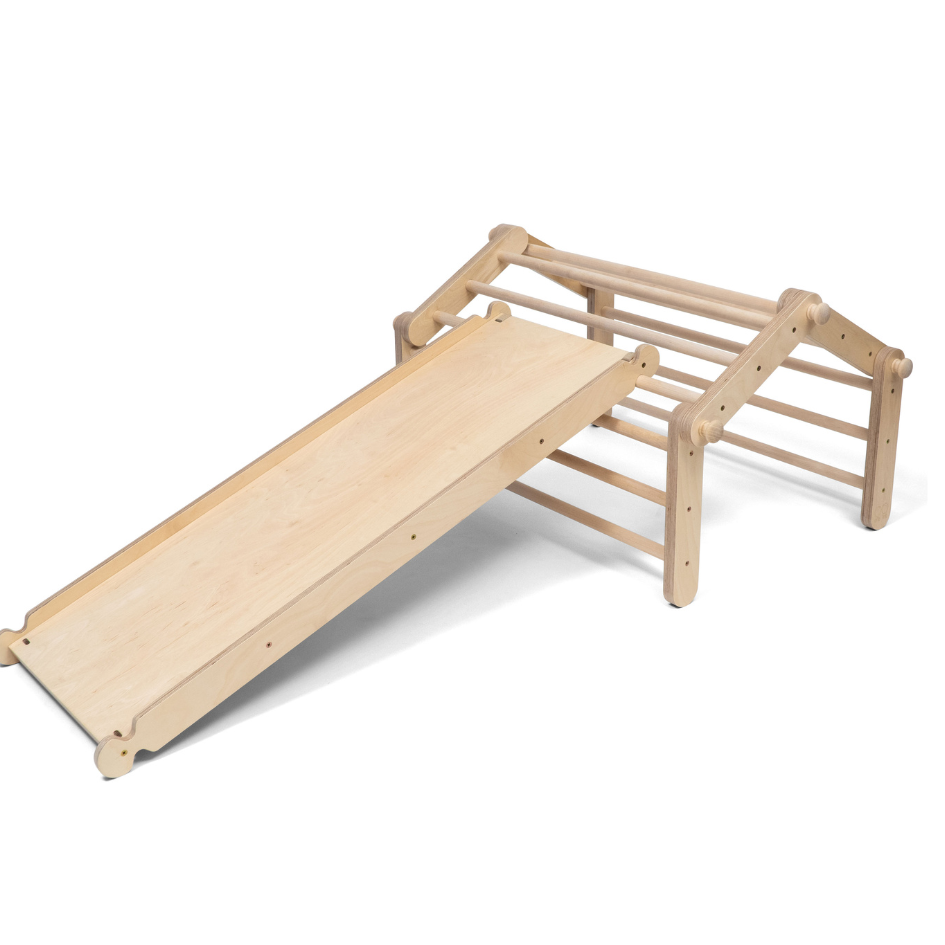The Pikler Method, developed by Dr. Emmi Pikler, focuses on the comprehensive development of children through the promotion of free movement and autonomy from an early age. This methodology provides a safe and respectful environment where children can explore and learn at their own pace, promoting healthy physical and emotional growth.

In this article, we will discover how the Pikler Method benefits child development, highlighting 5 key benefits for our little ones.
1. Better Understanding of One's Own Body and Its Limitations
The Pikler Method emphasizes the importance of allowing children to explore their environment autonomously, thus promoting a better understanding of one's own body and its limitations.

This autonomy in exploration is key to child development, as it fosters curiosity and confidence in one's own physical abilities.
Free movement is fundamental in this process. By not imposing unnecessary restrictions on children, we allow them to discover for themselves how far they can go and what their limits are. This not only improves their body awareness but also teaches them to manage their risks safely.
- The idea behind Pikler is to empower children to explore safely what their body is capable of doing autonomously and independently.
- Encouraging curiosity and confidence in their own physical abilities.
2. Increased Safety and Self-confidence in the Child
The Pikler Method not only focuses on the child's physical development but also places great emphasis on emotional and psychological growth. Encouraging self-confidence and safety in young children is one of its fundamental pillars.
To achieve this, the role of the adult as a companion rather than as a direct guide is crucial.

This means observing and preparing the environment to be safe and stimulating, allowing the child to explore and learn at their own pace. The idea is to let the child test their abilities without unnecessary interventions, except in situations of real danger.
The autonomy and confidence that the child develops by being supported in this way are essential for their comprehensive growth.
Key points to encourage this safety and self-confidence include:
- Preparing a safe and motivating environment.
- Observing and not intervening, allowing autonomous learning.
- Respecting the individual development pace of each child.
- Avoiding comparisons with other children.
These practices help establish stable and secure emotional bonds, essential for the emotional and psychological development of the child.
3. Improved Movements, More Synchronized and Harmonious
The Pikler Method not only focuses on the physical development of children but also seeks to harmonize their movements, making them more synchronized and fluid. This improvement in coordination and balance is fundamental to the comprehensive development of the child, as it allows them to explore their environment more safely and confidently.

By applying the principles of Pikler, children learn to move freely, but always within a safe and specially prepared environment. This encourages active and conscious exploration, allowing them to naturally discover their own capabilities and limitations.
- Attentive observation and non-direct intervention
- Preparation of a safe and stimulating environment
- Promotion of exploration and free play
The key is to allow the child to move freely, but always under careful and loving observation, avoiding intervening unless absolutely necessary.
4. Increase in the Quality of Learning and Emotional and Affective Development
The Pikler Pedagogy, focused on respecting the natural development rhythm of children, promotes an environment where learning and emotional and affective development are significantly enriched.

The key lies in the creation of stable and secure emotional bonds, which allow children to explore the world with confidence and safety.
- Attentive observation and respectful accompaniment by the adult are essential.
- Free movement is encouraged, allowing the child to discover and learn at their own pace.
- Emmi Pikler emphasized the importance of not intervening unnecessarily, thus promoting the child's self-confidence and independence.
The Pikler Pedagogy not only focuses on physical development but encompasses all aspects of the child's growth, offering a comprehensive approach.
5. Better Brain Maturation
Brain maturation is a fundamental aspect of child development, and the Pikler Method plays a crucial role in this process. Through freedom of movement and autonomous exploration, children can develop stronger and more complex neural connections. This translates into better problem-solving skills, increased creativity, and a deeper understanding of the world around them.

The Pikler Method emphasizes the importance of allowing children to move freely, without unnecessary restrictions. This not only benefits their physical development but also has a significant impact on their brain development.
Autonomous exploration is key to the development of advanced cognitive skills.
Some of the specific benefits include:
- Improvement in coordination and balance
- Increased attention and concentration abilities
- Development of curiosity and the desire to learn
The Pikler pedagogy, by promoting an environment of respect and freedom, facilitates better brain maturation, allowing each child to reach their full potential.

Discover how to enhance your children's brain maturation with our products specifically designed to promote cognitive and physical development from an early age. Visit our website to explore our wide range of educational toys and learning tools that will make a difference in your little ones' growth. Don't wait any longer and start building a bright future for them today!
Frequently Asked Questions about Pikler
What is the Pikler Method and how does it differ from Montessori?
The Pikler Method, developed by Dr. Emmi Pikler, focuses on free movement and independent learning through play, emphasizing respectful parenting and the autonomous development of children. While it shares similarities with Montessori in its emphasis on autonomy and learning through play, Pikler places a greater emphasis on free movement from an early age.
How can the Pikler pedagogy be applied at home or in school?
To apply the Pikler pedagogy, it is essential to prepare a safe environment that allows children to explore and move freely, without unnecessary restrictions such as walkers. Pikler materials, such as the Pikler triangle, can be used to encourage motor development and autonomy. The key is to observe and respect the individual development rhythm of each child, providing emotional and physical support when necessary.
What are the main benefits of the Pikler Method?
The benefits of the Pikler Method include better knowledge of one's own body and its limitations, increased safety and self-confidence, more synchronized and harmonious movements, improved quality of learning and emotional and affective development, and better brain maturation. These benefits are achieved through free movement, independent play, and respectful parenting.
Can the Pikler Method be applied to children of all ages?
Yes, the Pikler Method can be applied to children of all ages, although it focuses especially on early childhood. The key is to adapt activities and the environment to respect the development rhythm and needs of each child, promoting their autonomy and learning through free movement and independent exploration in a safe and respectful environment.

